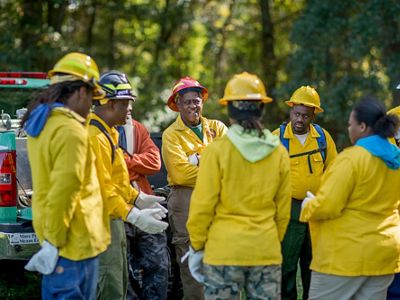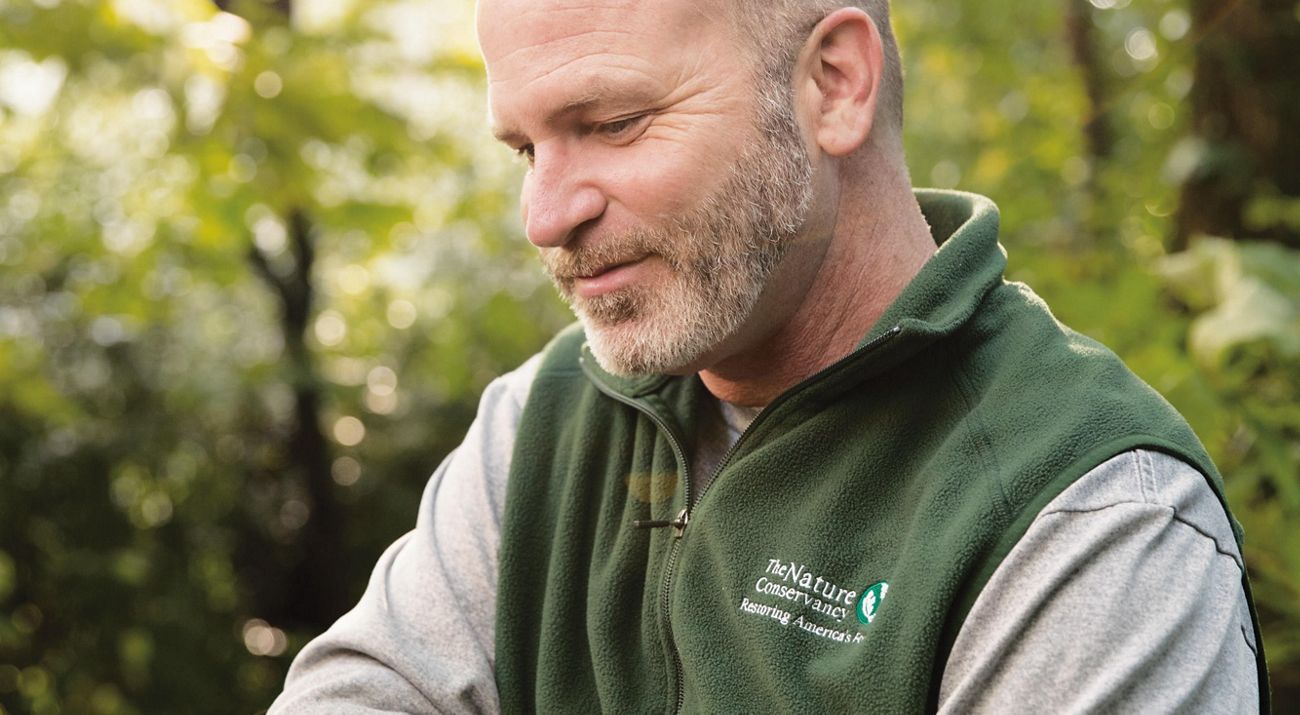Interview: Troy Ettel
TNC’s head longleaf pine conservationist is recruiting a new generation of fire managers to save the iconic Southern forest.
Winter 2017
Nature Conservancy: You present a fascinating resume: You are a certified Kansas City barbecue judge. You’ve appeared on the History Channel. You even helped a forager for the internationally renowned restaurant Daniel find wild ingredients as she managed a forest. But your day job is conserving the South’s longleaf pine forest. Why the passion for longleaf pine?
Troy: Longleaf was the king of the Southern forest. It covered 92 million acres and was sort of the iconic landscape across nine states. It harbored a lot of endemism in plants and animals—a lot of rare species.
Nature Conservancy: Now longleaf pine only covers about 4.7 million acres. So why are you burning these forests?
Troy: Without fire, you don’t have longleaf pine. Historically, the very frequent fires that occurred in the landscape never allowed brush and denser trees to grow up. Longleaf responds well after those sorts of disturbances.
Nature Conservancy: Yet I hear there’s a shortage of workers to do the burning. You linked up with Job Corps, a Labor Department program for disadvantaged youth ages 16 to 24, and you’ve recruited more than 50 local interns over the past three years to help set controlled fires in longleaf pine. Burn training is notoriously detail-oriented and physically demanding, though. How have the interns done?
Troy: Many of the kids find this work very exciting—give them a fire torch and they get to set the woods on fire. Who wouldn’t love that? If it were just that, I might not be as impressed. But they’re out there doing really hard work and it’s really hot. We have ticks and mosquitoes the size of bald eagles. And extremely venomous snakes that they see on a daily basis.

Nature Conservancy: So, what happens after the six-month internship ends?
Troy: We work closely with recruitment officers for the Fish and Wildlife Service and the Forest Service. They have a commitment to diversity: They have seen their numbers of minority employees decline, and they see us as helping screen applicants. The agencies really want them.
Nature Conservancy: You—and those agencies—have made a point of recruiting local youth for these positions. Why?
Troy: First, we need young people with enthusiasm and energy to get the work done. Second, and equally important, we need to identify and start training the conservation professionals of tomorrow, and they need to look and be very different from the conservation professionals of today.
Nature Conservancy: Which is what?
Troy: 97% of the people in the firefighting community are white males. There are very few women and African-Americans and Latinos in the fire field. This is a great opportunity, I think and hope, to reach out and maybe change that—especially here in the South, where these teens who do the work reflect the local communities who live in these landscapes.
Nature Conservancy: And since the partnership started in Florida in 2014, it has grown to cover six fire teams across all five Gulf states. That’s fast.
Troy: Yeah, despite the difficulty of what we’re trying to do, when I secured [additional] funding last year, I asked all the [regional] fire managers: “This is what we have the opportunity to do—who would be interested in sponsoring teams?” I had hoped that we would have interest from an additional one or two states. But everyone wanted in: Texas, Louisiana, Alabama, Mississippi and Florida.
Quote: Troy Ettel
We need to identify and start training the conservation professionals of tomorrow, and they need to look and be very different from the conservation professionals of today.
Nature Conservancy: This work ultimately comes back to restoring the forest itself, combining burning with land preservation and advocacy. How do you feel it’s going?
Troy: We have made significant gains. But at times it feels like we have to run faster just to maintain the same pace: Losses of existing longleaf pine remain significant threats. The past two years, though, we have hosted 45 to 50 people at an annual meeting that brings together all TNC staff who work on longleaf pine to network. At the conclusion of this meeting, I had the same feeling that brought me to this position in 2011: I have been part of many large-scale conservation projects with lofty goals in my career, but this one is the first that really feels plausible. As an optimistic person by nature, that keeps me going and feeds my soul.
